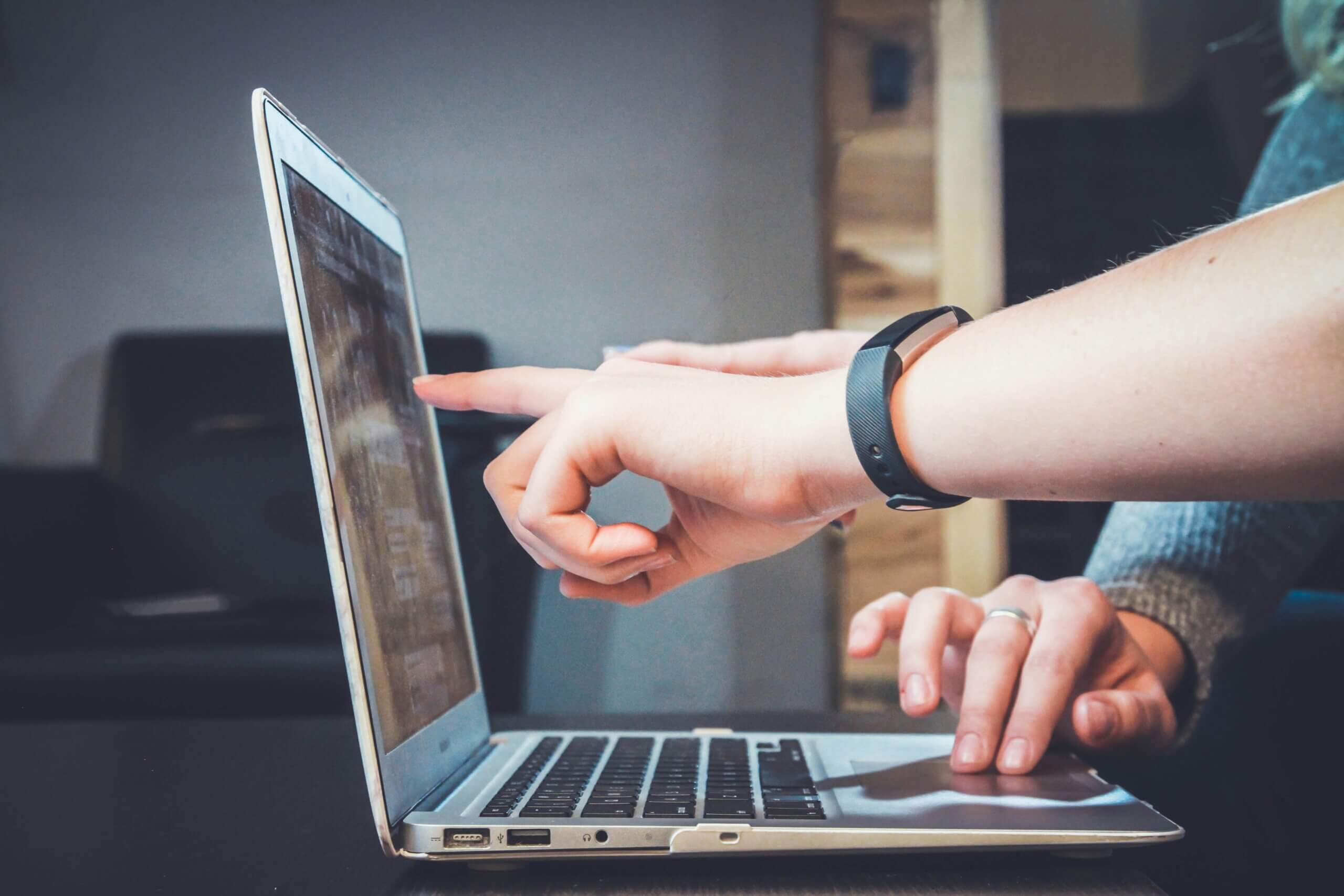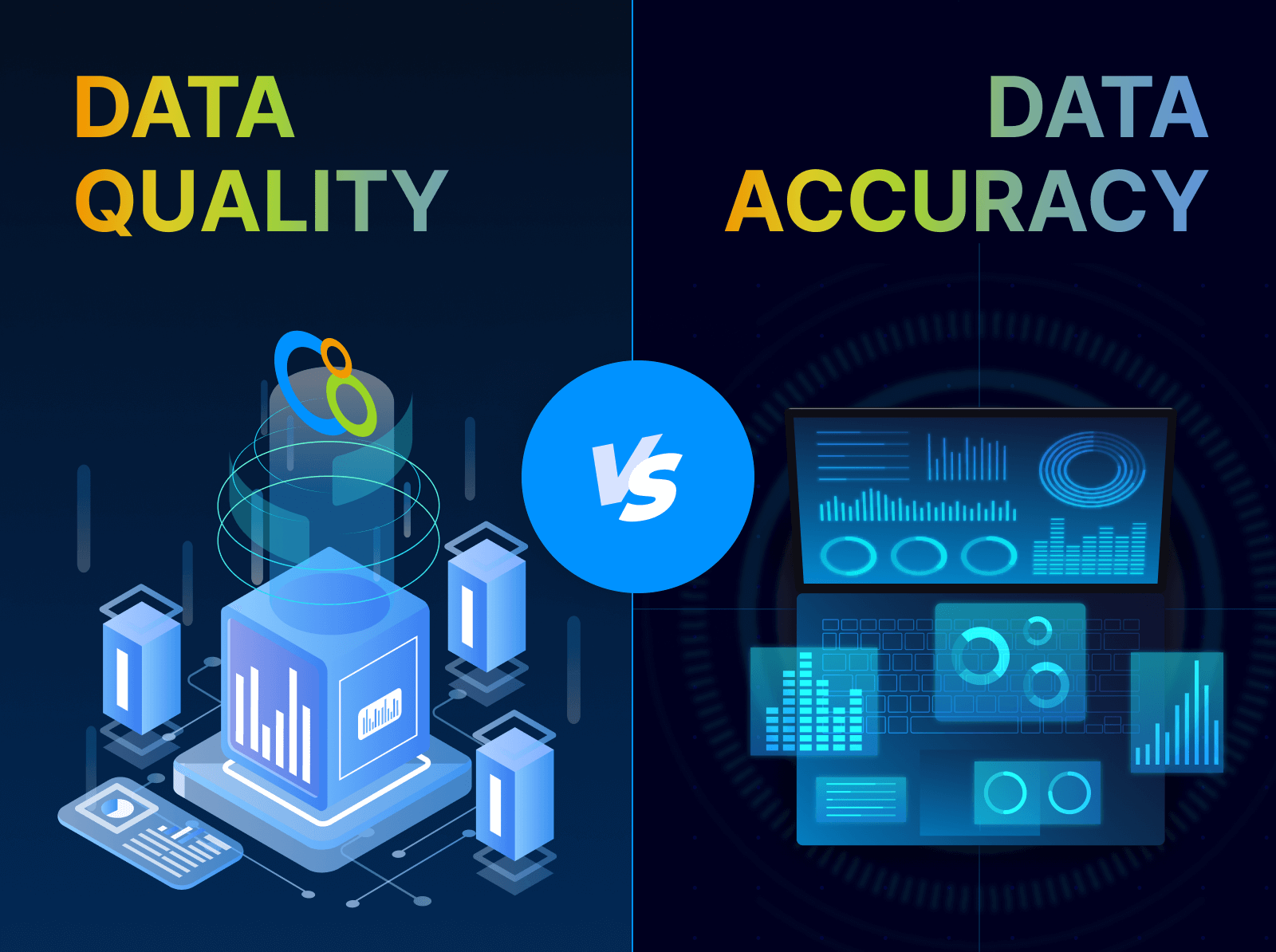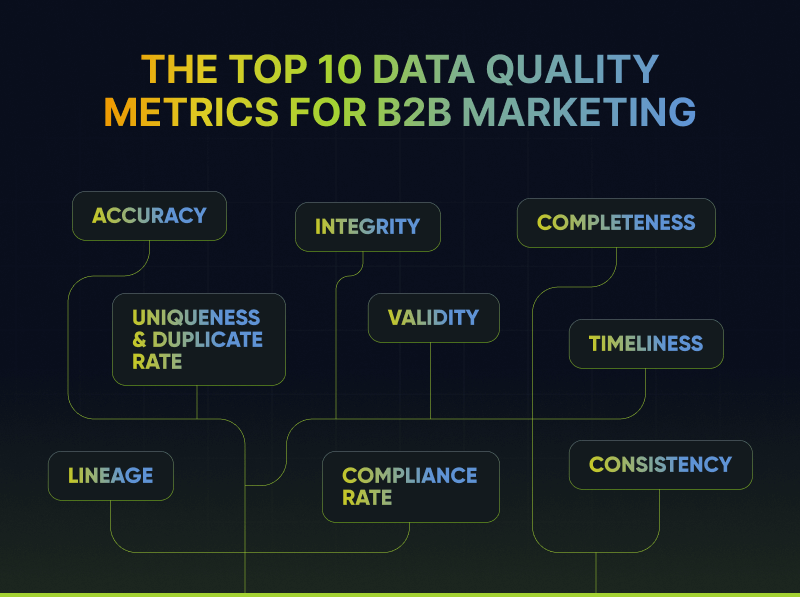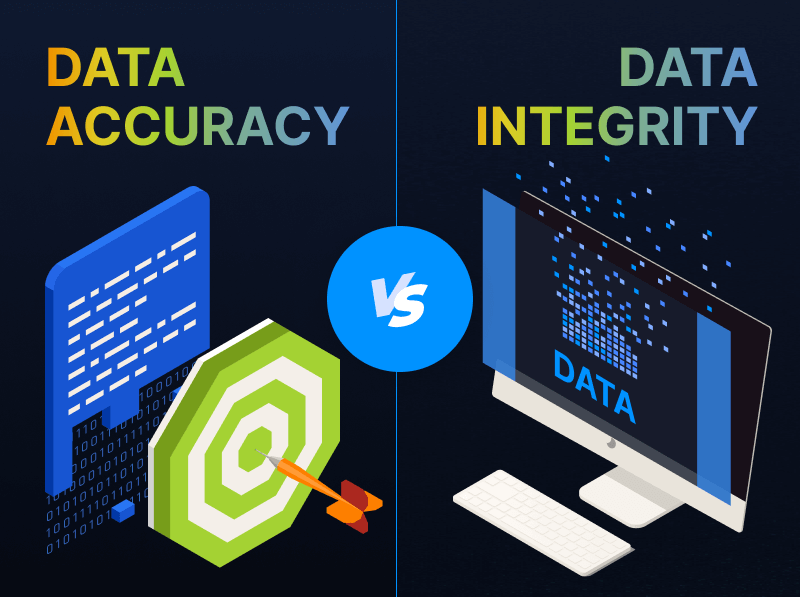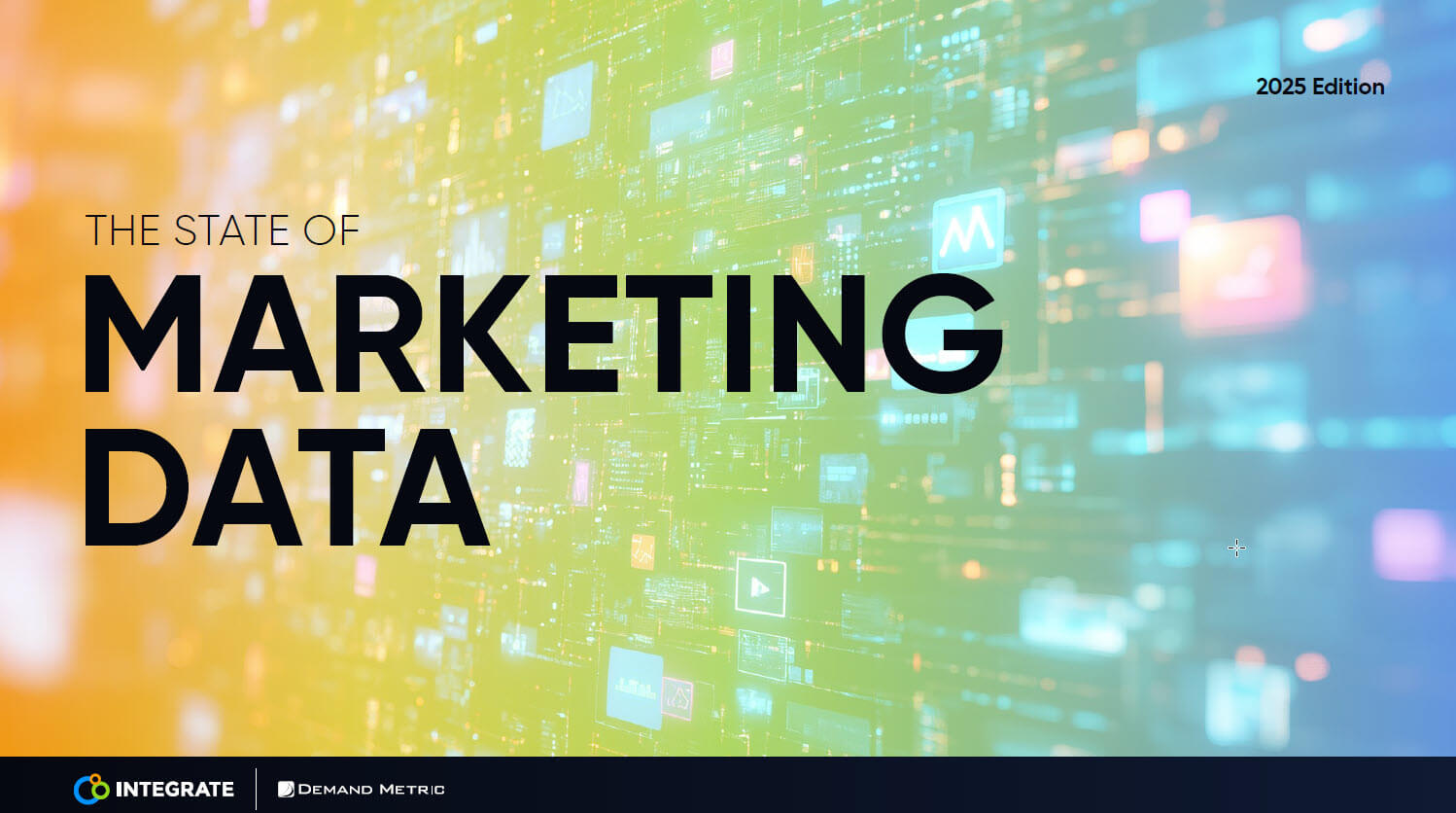B2B Game Changers Recap: Moving Beyond ABM to a New Model for Demand
The shift to Account-Based Marketing practices over the last five years has done great things for marketing. Specifically, they have brought greater alignment between marketing and sales teams, especially as they learn to focus on the right list of accounts to pursue.
However, during that process marketers have started to lose touch with buyers. They’re no longer focused on creating great experiences for the people who are purchasing their solutions.
The problem? Accounts don’t buy things. People do.
It’s time for a new demand model. B2B marketers need one that not only considers accounts, but also buyers and members of the buying unit, because today’s omnichannel, multi-device, digital world mandates it.
I recently had the opportunity to sit down with Craig Rosenberg of Gartner at our B2B Game Changers virtual conference. We explored how the flagship marketing funnel has changed, and Craig outlined the new, cutting-edge metrics B2B marketers should pursue to drive better, more precise demand strategies in this new era of marketing.
The Cold Hard Facts
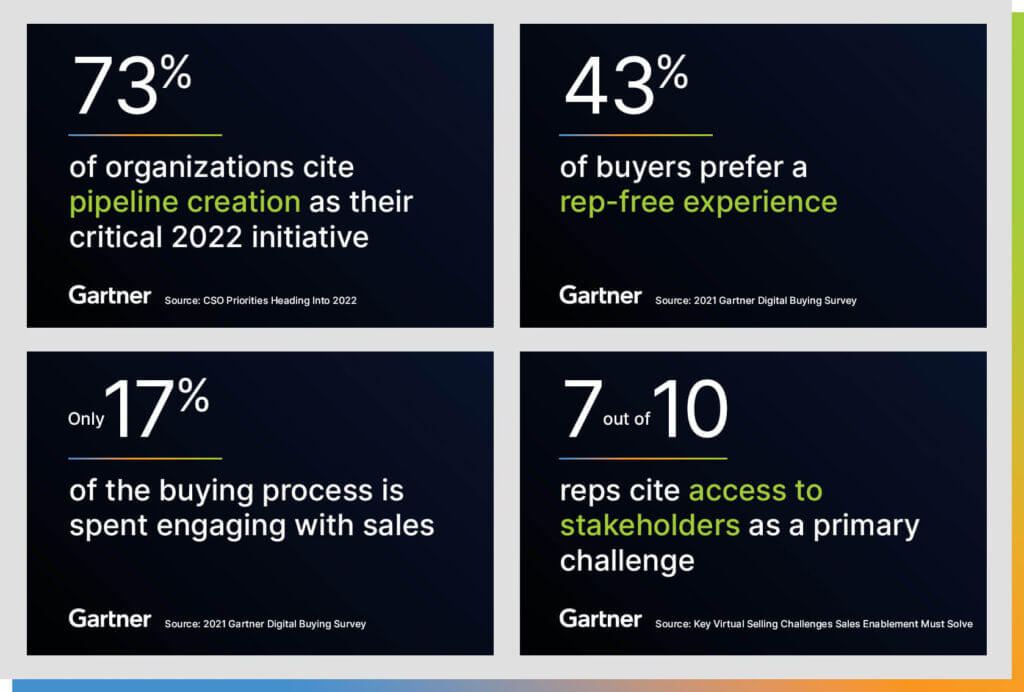
With virtually everyone chasing after pipeline, B2B marketing leaders are facing their biggest challenges yet. According to Rosenberg, the shift in buyer behavior has led to marketers focusing on issues like moving their “reps into the virtual space and doing everything digitally,” but “the thing that’s going to affect us most is what our buyers are going through.”
Preferences have changed, as evidenced by the fact that nearly half of buyers are seeking a purchase journey that doesn’t involve sales at all. According to Rosenberg this number will keep climbing, especially in “five years from now when the 20-somethings in this survey become VPs and executives.” Marketers need to be able to “deliver content and information and experiences across all channels because traditional methods—like just getting them in front of a rep—are no longer available.”
In addition to this, buying committees are growing across the board, complicating the path to purchase by involving several more touches. Engagement can be much harder to come by, so marketers need to develop strategies that take these challenges into consideration.
Although looking at all these stats can bring B2B marketers face to face with a harsh reality, Rosenberg believes there’s hope within reach. It’s all about understanding account-based strategies and the implications they have for traditional marketing funnels, and then adjusting focus towards the right metrics for success.
The Evolution of the New Model for Demand:
The Shift to Account-Based Strategies
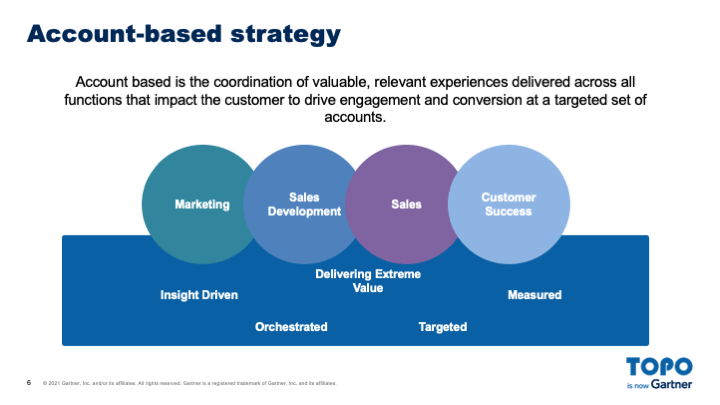
There’s been some trepidation amongst B2B teams around leveraging account-based marketing. According to Rosenberg, he’s been working heavily with CROs who “don’t want to talk about ABM, but they want to talk about account-based strategies.”
The pandemic has actually been able to bring sales and marketing teams together more than ever before, as they have both moved the buyer to front and center. Leveraging account-based strategies has allowed for greater cross-functional alignment. Individualized journeys can be developed for target accounts, with smarter campaigns aiming for the right engagements.
Rosenberg states, “In my opinion, we’re about to hit a new place where we might not talk about things being account-based anymore, and it might be just the way we do things.” So how does this approach affect the funnel as we know it?
The New and Improved Account-Based Funnel
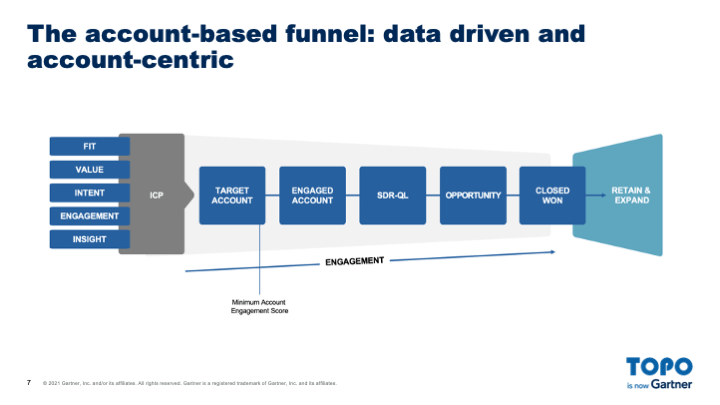
The landscape has changed. It’s not just about how many leads have been acquired and then how many have converted. “The B2B industry became more targeted… data has moved to the forefront, and it’s been really fun to watch people use data to make really good decisions,” says Rosenberg.
B2B marketers are starting to leverage a funnel that looks a bit different. They’re now asking questions like:
- Who is the right customer?
- How do we bring the target account list together?
- Do we have the right data to put the list together?
- How do we map out an experience that recognizes the fact we’re getting less than 20% of buyer’s time throughout their purchase journey?
By bringing the data forward in the funnel and creating an ICP, marketers can make more informed decisions about their target accounts. They can also extend their focus, considering the entire lifecycle of those accounts and determining where to engage and in what ways.
This change at the top of the funnel has paved the way for engagement to emerge as the metric of highest priority for marketers. In turn, they’ll need to adjust the way in which they measure their work.
Adjustments in Measurement
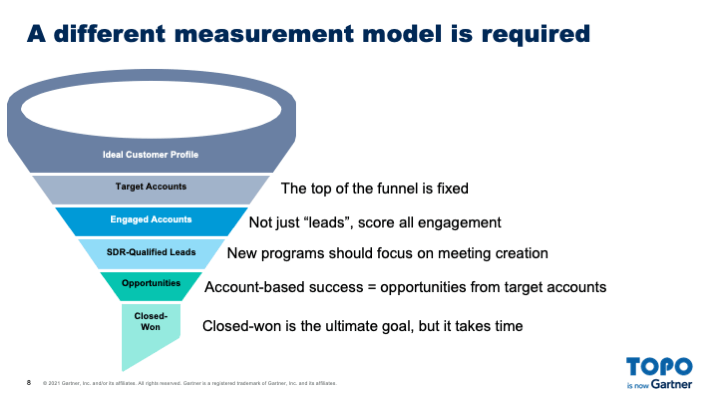
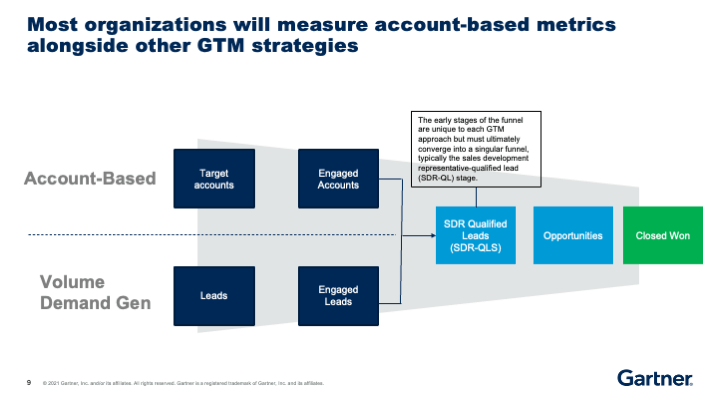
“If you have done your work and figured out what should go into the top of the funnel, the types of accounts… it’s a self-fulfilling prophecy. You are stacking the deck and saying, ‘I’m not going to take any chances. These are the accounts that we close every time, so let’s spend our time on those.’ Generally speaking, the results will come out in your favor,” says Rosenberg.
Organizations are making changes in how they look at the funnel. They are now developing a more holistic approach that includes both their account-based strategies in conjunction with their other go-to-market strategies, like volume demand generation, product-led and channel-driven methods. Rosenberg states that “the double-funnel has been really important, especially in its ability to track more than one GTM path… It’s about good marketing.”
Moving Forward
It’s no longer about the lead, no longer about who’s contributing the lead, or even how the leads are converting. There’s been a major shift towards engagement across the entire buyer experience.
In this new version of the B2B landscape, it is critical for marketers to adopt Precision Demand Marketing strategies. They need to develop an omnichannel, buyer-centric view. Then they should work to break down silos, and reframe how they target, activate, connect, govern, and measure.
Watch the entire video of my session with Craig from Integrate’s B2B Game Changers virtual event, on demand now.



